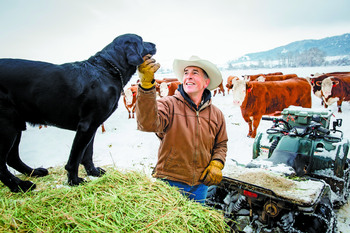Winter Animal Care: Keep Your Animals Warm This Season
Posted on December 1, 2018

Keeping Your Animals Hydrated
It may seem like eating snow or ice can help hydrate your animals. However, Ice and snow consumption lowers body temperature and increases maintenance energy needs. One of the biggest challenges during the winter is keeping ice from freezing over. Livestock need a lot of water in the winter. Fortunately, there are ways to prevent this from happening. For example, we carry deicers from Little Giant that float in the tank or sit at the bottom. If you don’t have access to electricity, larger tanks have more thermal mass so the water will retain more of its own heat.
Keeping Your Animals Fed
Feeding your livestock may change during the winter season. For example, feeding later in the day during severe cold can increase heat production during the night. Another factor in feeding your livestock is labor availability. If you do daily hand feedings, you will have a better sense of your animals’s health and appetite. Make sure to protect you feed from rodents, they can easily destroy and invade feed supplies that are not kept safe.
Keeping Your Animals Sheltered
Most livestock can handle low temperatures, wind, however, can be difficult for them. Provide wind breaks during lower temperatures such as thick edges of trees or physical barriers like barns or gates with blankets. When it rains or snows, make sure to provide a dry place for your animals to go. Proper ventilation prevents animals from having severe skin, eye and respiratory issues. When it comes to ventilation, just make sure that air can move and the animals still have a way to stay out of said movement if need be.
There are additional elements that can help your livestock through this season such as fencing and exercise. This reminder of livestock’s basic needs is the starting point to keeping them warm and healthy.
Blog Archives
- January 2020
- December 2019
- November 2019
- October 2019
- September 2019
- August 2019
- July 2019
- June 2019
- May 2019
- April 2019
- March 2019
- January 2019
- December 2018
- September 2018
- July 2018
- May 2018
- April 2018
- January 2018
- December 2017
- November 2017
- October 2017
- August 2017
- June 2017
- March 2017
- February 2017
- January 2017
- December 2016
- November 2016
- September 2016
- August 2016
- July 2016
- January 2016
- November 2015
- October 2015
- January 2015
- October 2014
- September 2014
- August 2014